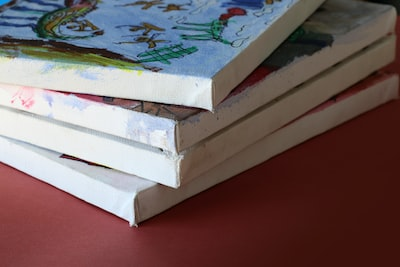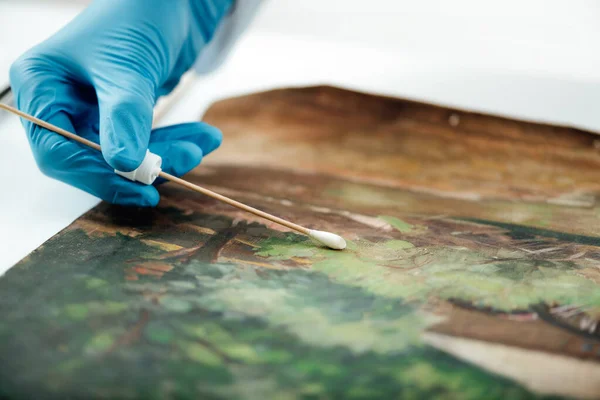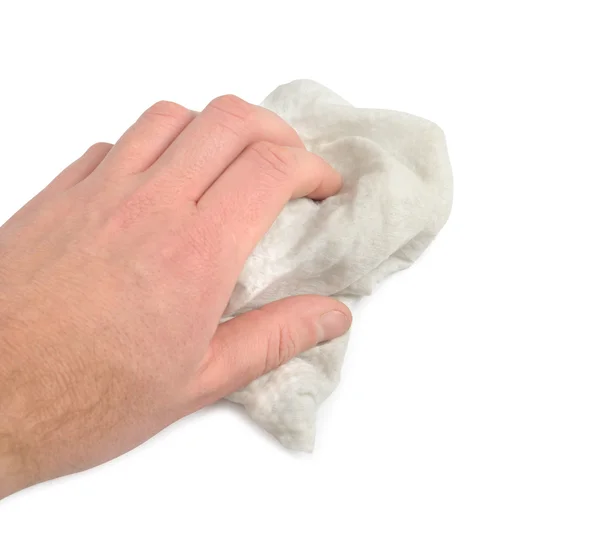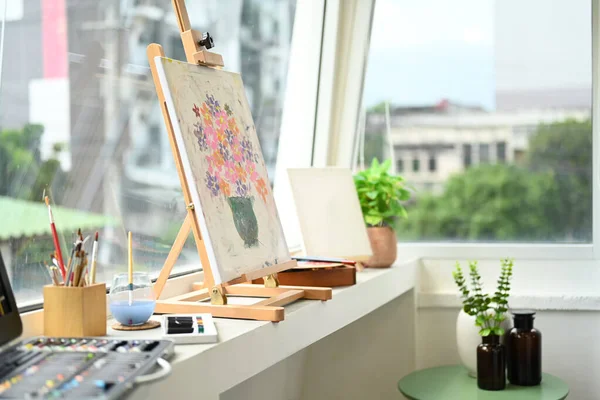How to Clean a Canvas Painting: Tips and Techniques
Posted by MintSuper Art on 28th Jan 2024
As lovers of beautiful and vibrant canvas artworks, we understand the importance of maintaining their pristine condition. Over time, dust and grime can accumulate on your treasured pieces, dulling their original brilliance. This is why learning how to properly care for these works of art is essential.
This read will equip you with a handy guide on how to clean a canvas art collection without causing any damage; maintaining your masterpiece in mint condition will be second nature.
Importance of Cleaning Canvas Artworks
In the world of art, preserving the originality and beauty of a piece is crucial. This not only involves careful handling but also regular cleaning. One might wonder how to clean canvas art, especially when it is an old painting that holds significant value.
Cleaning your canvas artwork regularly plays a vital role in extending its lifespan. Dirt and dust particles can accumulate over time on the surface of your paintings (or might embed into the paint), causing them to lose their vibrancy and potentially damaging the material underneath, eventually leading to cracking or peeling. Regular maintenance ensures these harmful elements are avoided, thereby maintaining both visual appeal and structural integrity.
If you have older works in your collection, understanding how to clean your treasured prints becomes even more critical. These pieces are likely to be more delicate and susceptible to damage if not handled properly. The best way to clean canvas in such cases is usually a gentle one, using soft brushes and mild cleaning solutions that won't harm the paint or canvas material. Proper cleaning of older artworks can help prevent deterioration over time, ensuring these precious art pieces continue bringing joy for many years to come.
To fully understand the importance of cleaning canvas artwork, here's a detailed guide on how to clean a canvas painting. Each step is clearly explained to avoid any potential damage to the artwork.
Step-by-Step Guide on How to Clean a Canvas Painting
Keeping your canvas art in perfect condition is essential for preserving its aesthetic appeal and value. Knowing the basic cleaning techniques for your artwork can significantly contribute to its longevity, whether it is an old painting, high-quality canvas print, oil or acrylic painting on canvas.
1. Gather Your Cleaning Supplies
Before you dive into the process, it's essential that you gather the right cleaning tools and materials. Having everything at hand will make the task easier and more efficient.
- SOFT-BRISTLED BRUSH - The first thing on your list should be a soft bristle brush, such as a canvas brush (or make-up brush will do). This is an ideal tool for dusting off any loose dirt or particles from the surface of your artwork without causing any damage. Make sure that the brush is clean before using it on your canvas painting.
- WIPING MATERIALS - You'll also need a wiping material for gently wiping down after cleaning and absorbing excess moisture from the piece. Microfibre cloths, dry soft cloths, lint-free paper towels, and wet wipes are recommended due to their high absorbency rate and gentle texture, which won't scratch or harm delicate surfaces like canvases.
- COTTON SWABS - Cotton swabs (or specialised cotton swabs with long handles) are another important item in this procedure. They come in handy when dealing with smaller areas or hard-to-reach corners where a regular brush might not fit well.
- MILD SOAP SOLUTION - A mild soap solution can also be used as the best way to clean canvas paintings. Olive oil-based soap is often considered effective due to its low pH level and mild properties. However, it's important to understand what materials they are made out of, as different materials react differently with various cleaning agents—they can enhance or ruin the cleaning process. It's always wise to test these on a small, inconspicuous area of the artwork first to ensure they won't cause any damage.
- DISTILLED WATER - Using distilled water in canvas paintings might be better than tap water as it may contain minerals that could potentially damage the artwork.
- SPRAY BOTTLE - You might want to use spray glass or bottles when cleaning a canvas painting as it may serve various purposes.
- HAND GLOVES - You might also need hand gloves when cleaning canvas paintings; they can be useful in certain situations.
By having these supplies, you'll be well-prepared for maintaining the appearance and longevity of your canvas art pieces!
2. Dust off Surface Dirt
To start with, gently remove dust from the surface of your painting with a soft, clean brush. Start from the top and work your way down to capture any dislodged dust. Make sure you do this slowly and carefully to avoid scratching or damaging the paintwork.
3. Clean with a Soft Cloth
Next, slightly dampen your cloth with distilled water and lightly wipe across the surface of your canvas art piece. Remember not to soak the cloth; you don't want too much moisture on your painting, as it might cause damage over time.
4. Spot Cleaning
If there are still marks left, prepare a gentle cleaning solution using distilled water and mild soap. Apply this mixture carefully with a soft cloth onto small areas at a time, then wipe immediately with a clean, damp cloth so as not to leave any soap residue behind.
5. Dry the Painting
Once cleaned, allow your art to dry naturally at room temperature, away from direct sunlight, which can fade colours over time. Ensure there are no wet spots left on the canvas before moving on to displaying or hanging up again.
Do note that it's always advisable to fully check the entire piece after the cleaning process; if your canvas art has been damaged, cracked or with flaking paint or discolouration of the paintwork, your artwork may require art restoration services carried out by professional art restorers. They have expertise in preserving works while maintaining their original integrity.
"Revive your canvas art with ease. Treat your canvas like fine wine; gentle soap for stubborn grime, soft brushes for a dust-free shine. Art's essence stays divine!"
Tips to Keep Your Canvas Art Pristine
Think of your canvas art as a mate you've invited round for tea. You wouldn't want them to sit in a dusty chair, would you? The same goes for your artwork – keeping it dust-free is just a common courtesy. Knowing how to maintain the quality and condition of your canvas artwork is crucial. So here are some valuable tips on keeping your canvas art in pristine condition.
✔️Avoid direct sunlight and control light levels. Continuous exposure can cause fading, distortion of panels and damage to the colours over time. Always place your canvas art in a location where it would not be exposed to harsh light conditions.
✔️Maintain humidity levels. Too much moisture can lead to mould growth while too little may cause cracking or peeling. Aim for around 45-55% relative humidity.
✔️Store your canvas paintings upright and not on a flat surface to prevent any dirt, dust, and debris from reaching them.
✔️Always handle your artwork with care when moving them around or during cleaning sessions. Regularly inspect it for any signs of wear.
✔️Clean your paintings regularly (as mentioned above) to keep them looking their best and also extend their lifespan.
✔️For canvas paintings or prints that no longer have frames, consider framing them in standard wood, metal, or floater frames. The purpose of putting a frame is to enhance and protect the artwork. Furthermore, it can offer protection to the edges of the canvas.
Remember that when it comes to maintaining your precious canvas art pieces, prevention is always better than cure. By following these simple tips and techniques, you'll keep your artwork looking as good as new.
Now that we've discussed how important proper maintenance is, let's look into whether cleaning chemicals should be used on these delicate pieces.
Can Cleaning Chemicals Be Used?
While some might be tempted to reach for household cleaners, the reality is that many of these products can do more harm than good.
When it comes to sprucing up your canvas art, cleaning chemicals should be used with caution. Harsh cleaning chemicals can cause irreversible damage to the painting, such as bleach, ammonia-based products or alcohol-based solutions as they may cause discolouration or fading over time.
These strong substances can strip away protective layers on the surface, leading to potentially irreparable harm. So it's best to opt for mild, pH-neutral cleaners specifically formulated for artwork.
When in doubt, always seek professional advice to ensure your artwork remains vibrant and intact.
How to Properly Store Canvas Paintings, In Case It Cannot Be Hanged?
Caring for your canvas art doesn't stop at knowing how to clean it. Storage is another aspect that plays a significant role in maintaining the pristine condition of your artwork. If you can't hang your canvas painting or need to store it temporarily, here are some tips on how to do so properly.
- Choose an ideal environment. Store in a cool, dry place away from direct sunlight and extreme temperatures. Also, avoid storing them in basements or attics where humidity levels can fluctuate drastically.
- Store paintings upright or vertically to help maintain their shape and prevent potential damage.
- Avoid stacking canvases directly on top of each other. If you must stack multiple canvases together due to space constraints, always ensure there's a barrier like foam board between each piece. This prevents any pressure points that could potentially damage the artwork underneath.

- Protect your artwork with acid-free materials. In case the piece needs to be wrapped, use acid-free paper, boards, or wax paper as an initial layer when wrapping and packing your canvases.
- Inspect and monitor paintings regularly, particularly if they are in storage.
Where Should You Hang Your Canvas Paintings?
Your home's interior can be significantly enhanced with the right piece of canvas art. But knowing where to hang your artwork is just as important as selecting it.
Ideally, canvas paintings should be hung in well-ventilated areas away from direct sunlight, heat sources, and high humidity. Avoid hanging them in kitchens or bathrooms, as the fluctuating humidity and airborne grease can compromise the artwork. Also, lighting plays a crucial role in showcasing the beauty of your canvas art. Natural light from windows can enhance colours but avoid direct sunlight.
In addition, consider size and shape. Larger pieces are best suited for spacious walls while smaller ones fit nicely in narrow spaces or grouped together in a gallery-style arrangement.
The wall colour also matters. Light-coloured walls are usually a safe choice as they allow the artwork to stand out, especially if it has dark tones. On the other hand, bold-coloured walls can provide an interesting contrast with lighter artwork.
How Often Should You Clean a Canvas Print or Painting?
Regular light dusting should be done every few months. However, the frequency may vary based on the painting's location and environmental factors. Inspect the artwork periodically and clean it as needed.
Conclusion
Proper maintenance is key to preserving the beauty of canvas art. By following the tips and techniques outlined in this post, you can ensure that your canvas prints and paintings remain in pristine condition for years or even a lifetime. Remember, a well-maintained canvas artwork can be a timeless piece of art that brings joy and elegance to your living space.
MintSuper Art – your destination for Canvas Art. Invest in beautiful art today and keep it looking its best with these simple cleaning tips!





